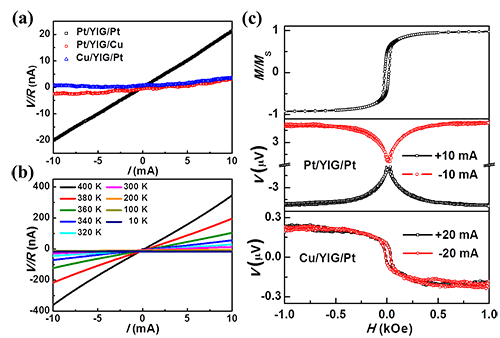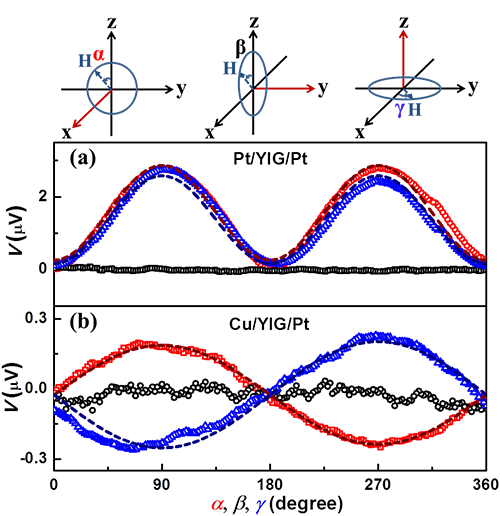Observation of magnon-mediated electric current drag at room temperature
Date:23-02-2016 Print
Spin-based electronic devices such as magnetic memory and spin logic rely on spin information transport. Generation, manipulation and detection of spin current are fundamental issues in spintronics research. In today’s spintronics, conduction electrons play the role of messengers, an interesting question is whether other particles or even quasiparticles can serve as spin information carriers. Magnon is a quasiparticle representing a low-energy excited state of ferromagnets. The quantized magnon is a boson and carries a basic spin angular momentum. Especially the pure spin information propagation in magnetic insulators without any charge current is one of the most desirable properties for devices with dramatically reduced power consumption.
In 2012, a theoretical model by Prof. Shufeng Zhang from University of Arizona has been proposed for observing the magnon mediated electric current drag across a ferrimagnetic insulator layer in the heavy metal (HM)/ ferrimagnetic insulator (FI)/ heavy metal (HM) structure. In this theory, an applied electric current in one HM layer accompanies an electron spin current due to the spin Hall effect (SHE). When the spin current flows to the boundary between the HM and the FI, non-equilibrium spins are accumulated and consequently, due to the s-d exchange interaction between conduction electrons in HM and magnetic moments in FI, magnons are created at the interface. The induced magnons subsequently diffuse in FI to the other interface where the magnon current converts back to an electron spin current in the other HM layer, leading to a charge current due to the inverse spin Hall effect (ISHE).
Recently, M02 group headed by Prof. Xiufeng Han, State Key Magnetic Laboratory, Institute of Physics, in collaboration with Prof. Shufeng Zhang from University of Arizona, experimentally observed the magnon mediated electric current drag at room temperature in the Pt/YIG/Pt structure. A new spin valve type structure was fabricated for the first time where a thin magnetic insulator is sandwiched by two heavy metallic layers. By carefully controlling the deposition and annealing conditions (with many failures), the well-defined smooth interfaces is achieved. The dependences of the drag voltage signal on temperature, the polarity of the current, and the direction of magnetization, are consistent with the early theoretical prediction of the magnon current propagation through a ferrimagnetic insulator. It is noted that the above magnon-mediated electric current drag is a linear response phenomenon, i.e., the drag current is linearly proportional to the applied current, which is different from previous spin pumping and spin Seebeck induced voltage signals.
This work conceptually proves the possibility of using new classes of structures for investigating the spin information transport in magnetic insulators, and opens a new field for spintronics research and development where the spin transport is carried by quasiparticles other than electrons.
This study entitled “Observation of magnon-mediated electric current drag at room temperature” was published on Phys. Rev. B 93 (2016) 060403(R).
The study was supported by the National Science Foundation, the Ministry of Science and Technology of China, the Chinese Academy of Sciences.
 |
| Fig. 1 (a) and (b) Vt/Rt-Ib characteristics measured in Pt/YIG/Pt, Cu/YIG/Pt and Pt/YIG/Cu samples, and (c) the magnetic field dependence of the magnon drag voltage in Pt/YIG/Pt and the spin Seebeck voltage in Cu/YIG/Pt. |
 |
| Fig. 2 The magnetization direction dependence of the magnon drag voltage in Pt/YIG/Pt (a) and the spin Seebeck voltage in Cu/YIG/Pt (b). |

